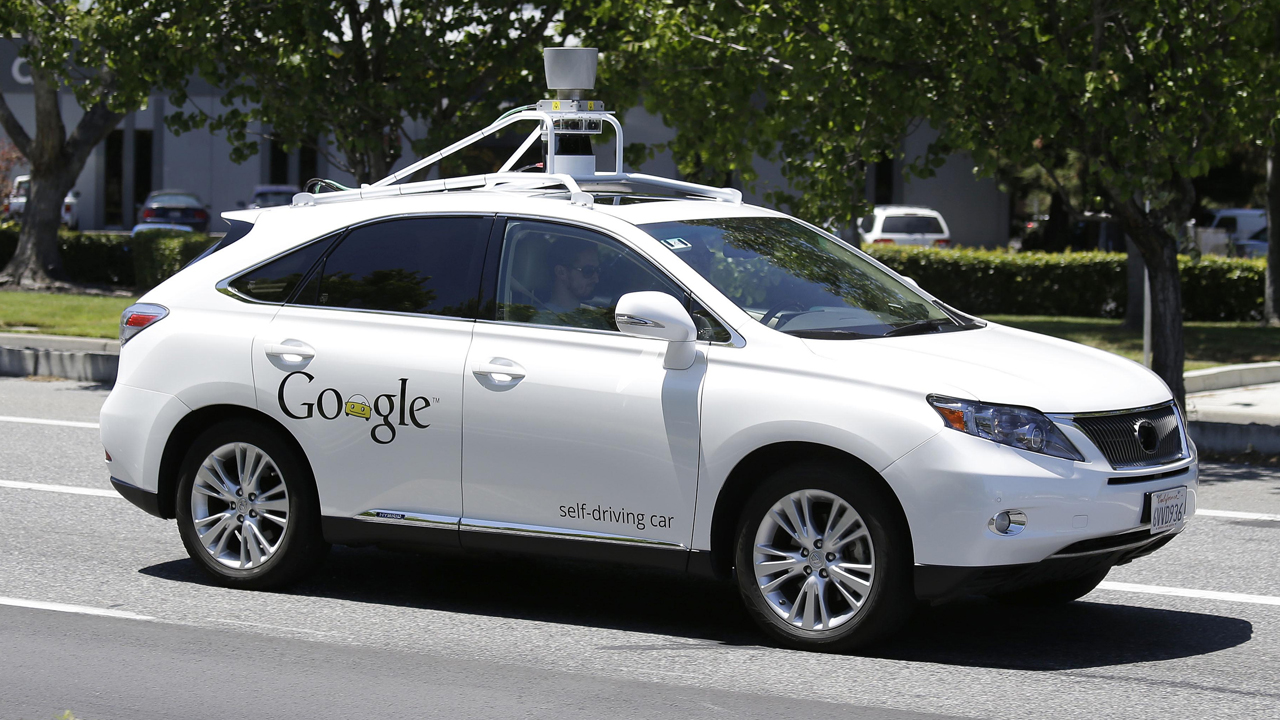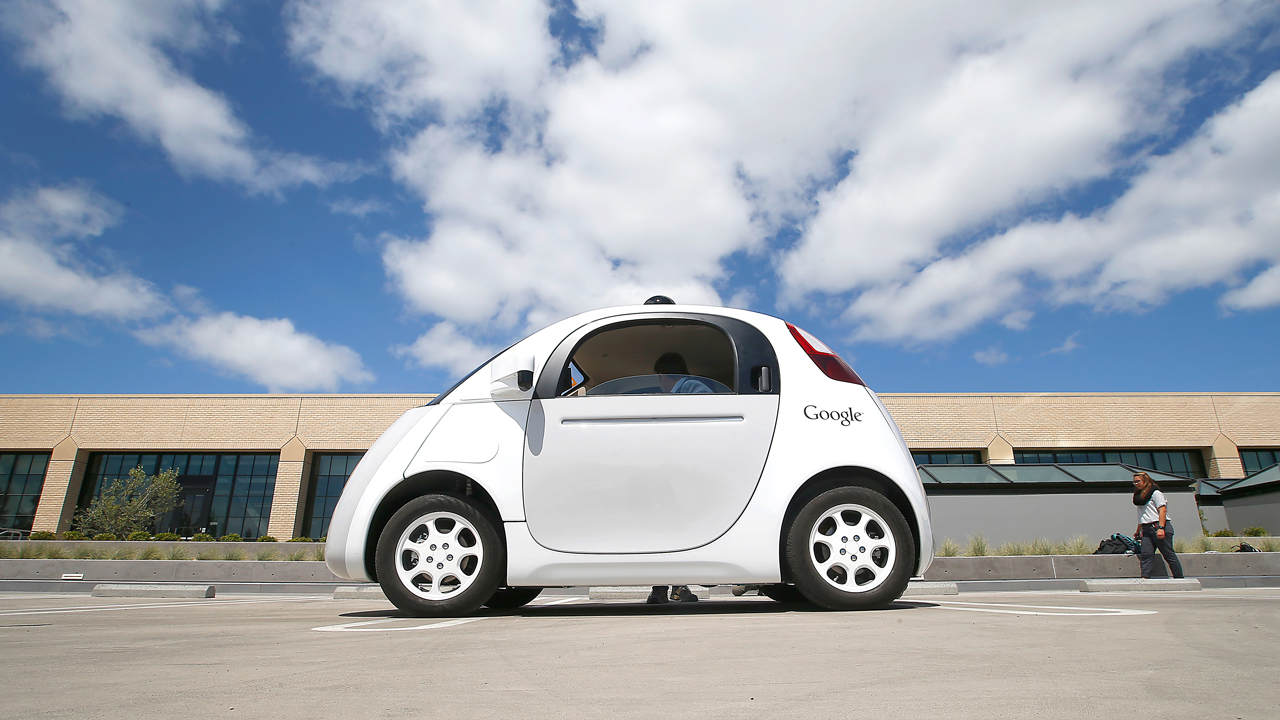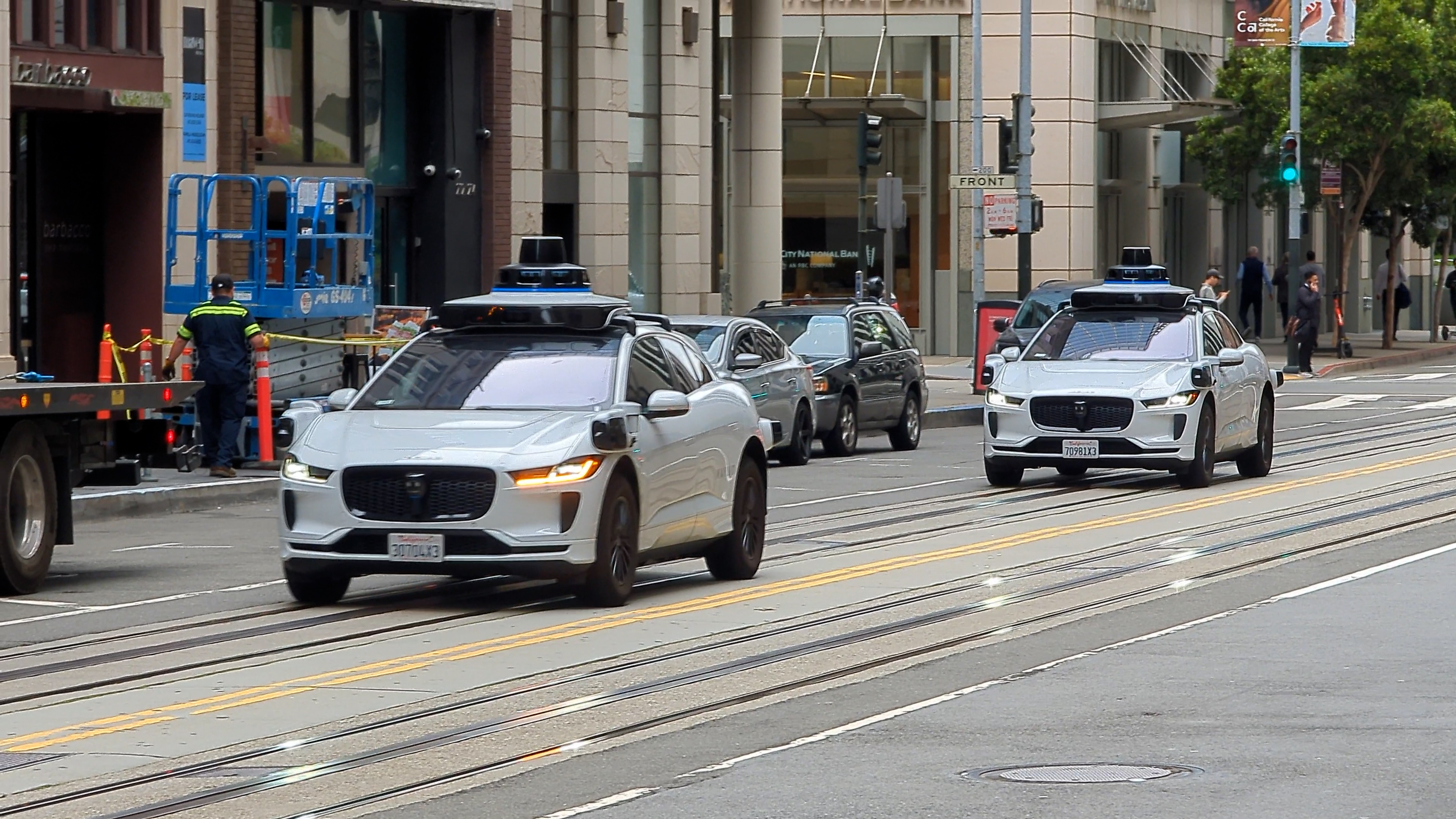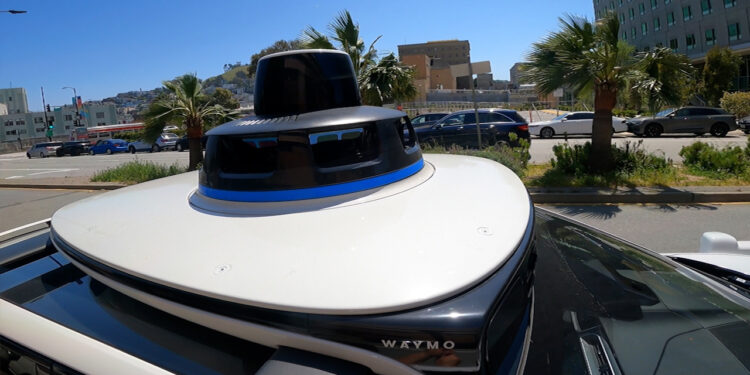SAN FRANCISCO (KGO) — It’s hard to stand on a sidewalk in San Francisco and not see a Waymo robotaxi pass by. Here’s a look back at its journey to dominating the robotaxi industry.
The white Jaguars have been transporting passengers in San Francisco and charging fares since Aug. 2023.
A DRIVERLESS TOMORROW: Motional and Zoox take different turns in the autonomous vehicle race
The cars naturally draw curiosity from tourists who see them zoom by without a driver behind the wheel, guided by a roof rack of cameras and spinning LiDAR sensors.
“These are lasers and these are one of the cars’ primary sensors for how it sees. These can tell you exactly where objects, people, and vehicles are in space,” said Chris Ludwick, director of product management at Waymo.
The sensors on top of the vehicle can detect objects all around the vehicle and can see far down the road. The vehicle has other sensors to see closer objects that may be around its edges.
Waymo self-driving cars use a combination of LiDAR, radar and cameras installed around the vehicle to drive without the need for a human behind the wheel.
KGO-TV
Waymo vehicles also use cameras, radar and microphones to listen for sirens from emergency vehicles.
The experience is seamless. After getting in the vehicle, passengers can see what the Waymo is detecting on a small screen in the vehicle. That includes other vehicles, people on the sidewalk and traffic cones set up by construction crews.
“When you simplify the entire self-driving car problem, what you need to do is first know where you are. Next, know what’s around you. Third, predict what’s about to happen next. And fourth, plan your own next move. And we detect that many times per second, and that’s how the car knows exactly what’s going around it and that’s why it’s so safe,” said Ludwick.
But the road from dream to money-making reality has had as many ups and downs as San Francisco’s hilly landscape.
The dream really began in 2004 with the DARPA Grand Challenge, an off-road race of autonomous vehicles organized by the Department of Defense.
A DRIVERLESS TOMORROW: How Mercedes beat Tesla to become 1st to offer level 3 autonomous personal car
The race attracted engineers, researchers and college kids from across the nation.
“DARPA conceived this idea that they would not back the research but merely offer a cash prize for a race requiring autonomous fast driving,” explained Red Whittaker, robotics professor at Carnegie Mellon University, who competed in the first DARPA race.
Out of 15 vehicle entries, none made it across the finish line. But the race gave birth to many future self-driving vehicle companies.
Chris Urmson, a research student at CMU who competed with a converted Humvee named Sandstorm, later led Google’s self-driving car project.

Sandstorm, a driverless vehicle created by Carnegie Mellon University, competed in the 2004 DARPA Grand Challenge in the Mojave Desert.
DARPA
Anthony Levandowski was a U.C. Berkeley student. He built a self-driving motorcycle named Ghost Rider.
“At the time, everybody was doing random things in labs and schools. So DARPA brought everybody onto the same focus of getting from point A to B,” said Levandowski, founder of Pronto, which provides autonomous driving technology for construction trucks.
The race repeated the following year and, this time, a team from Stanford University led by Sebastian Thrun won the competition.
“It was certainly eye opening to me that, within a year, we were able to build this technology. And when I saw that happening, I realized it’s like the birth moment of the self-driving car,” said Thrun.
The light bulb also went off for Larry Page, who founded Google with Sergey Brin seven years earlier.
A DRIVERLESS TOMORROW: Self-driving trucks transport goods on Texas freeways in expansion push, could lead to job losses
As he watched the race, Page was already thinking of making Google much more than a search engine.
“Larry is very technical. He cared about the machine learning work we were doing at the time, but he also was very visionary. He said this is technology that can really change the world,” recalled Thrun.
Levandowski and Thrun eventually ended up working at Google, developing Street View and Google Maps.
“I don’t think the world was ready for self-driving cars, but we could take a part of the world through image processing, image stitching, building maps, and bring it to the world,” said Thrun.
Self-driving cars got put on the backburner, until Levandowski got a call from a television producer in 2008 wanting to do a show about a self-driving vehicle delivering a pizza.

This May 13, 2014, file photo shows a Google self-driving Lexus at a Google event outside the Computer History Museum in Mountain View, Calif.
AP Photo/Eric Risberg
Google was not interested in the challenge, so Levandowski did it on his own time.
Levandowski created the Pri-Bot in less than four weeks. It was a Toyota Prius outfitted with a spinning LiDAR laser unit.
The historic trip was featured on the TV show “Prototype This!” It was the first autonomous vehicle to drive on a public road.
“It was pretty revolutionary for 2008, to have a Prius drive through San Francisco, with nobody at the controls, and make it onto the bridge,” said Levandowski.
A DRIVERLESS TOMORROW: From farming to mining, self-driving trucks are how humans do basic tasks
That historic drive convinced Google to go all-in on autonomous vehicles.
The self-driving project became part of Project X — a semi-secret research arm of Google that funds ideas with world-changing potential.
“One of my very first jobs was to build a car that could safely drive in San Francisco. And we did so secretly, we didn’t tell the public about it. We just had a safety driver inside who could safely take over. We drove in San Francisco and Los Angeles and around Lake Tahoe and never had an accident,” said Thrun.
Eventually, Chris Urmson joined the Google Self-Driving Car Project.
Much of the early software code and technology was based on what they learned during the DARPA races.
Within four years, Google got a license to operate a self-driving car in Nevada, the first of its kind.
The team continued to test the self-driving car through the streets of Silicon Valley.
“One of the things that we did, was to extensively map the environment. We felt if a car is to drive like a taxi in the same city over and over again, it might as well have elephant memory and remember exactly where other traffic lights are, and so on,” said Thrun.
The following year, Google unveiled Firefly. The vehicle was a prototype of what autonomous vehicles can be. It had no steering wheel and no gas or brake pedal.
In 2015, Firefly made the first trip of a fully autonomous vehicle on the streets of Austin, Texas, without a safety driver on board. No police escort. No closed streets. The car didn’t have a steering wheel or pedals. The only person in the car was blind.

In this May 13, 2015, file photo, Google’s new self-driving prototype car is presented during a demonstration at the Google campus in Mountain View, Calif.
AP Photo/Tony Avelar
The following year, Google’s self-driving car project was renamed Waymo and began testing passenger service near Phoenix, Arizona, with Chrysler Pacifica minivans.
But building self-driving vehicles proved to be expensive. Google spent more than $1 billion in the first six years of the project.
“The costs are clear, talent is very expensive, the computers needed to train the models behind the autonomous technology is very expensive, running fleets of vehicles is very expensive, and that’s not going to change,” explained Ed Ludlow, co-host of Bloomberg Technology.
It wasn’t long before Waymo teamed up with Jaguar to convert I-Pace electric sedans into self-driving vehicles.
It’s these cars that the California Public Utilities Commission allowed to operate on San Francisco city streets without a safety driver in 2018 and began operating as a limited version of robotaxis in 2020.
The ride to where we are now has been bumpy. Police and firefighters complained Waymo vehicles got confused near fires and other emergencies and jeopardized their response.
Videos on social media began popping up of Waymos stalled in traffic, going past police tape and driving over water lines during active fires.
“So when we have a human driver in a vehicle and they’re not pulling over, we can often signal to them to go right, to go left, to get out of our way. With autonomous vehicles, we can yell at them, we can wave at them, and there is nobody in there to to do what we are asking them to do,” explained then San Francisco Fire Chief Janine Nicholson during a public hearing of the California Public Utilities Commission.
San Francisco officials were powerless about regulating the vehicles.

Waymo self-driving vehicles travel along California Street in San Francisco, Calif.
KGO-TV
“You have all these very real headaches developing on the street here with traffic and congestion and concerns from first responders, but city officials don’t have any regulatory authority to do anything about it,” said Pete Bigelow, director of technology and innovation coverage at Automotive News.
The city of San Francisco wanted to cut back the number of autonomous vehicles on the street. But the two state agencies that regulate the industry, the Department of Motor Vehicles and the California Public Utilities Commission, let autonomous vehicle companies to keep operating and expanding.
The tension came to a head at a special CPUC meeting ahead of a vote to allow full deployment of autonomous vehicles in San Francisco in 2023.
San Francisco officials were asking AV companies to share reports of when the robotaxis stop in traffic or require a manual override to get out of a situation it does not understand.
Waymo resisted. A year earlier, Waymo had sued the Department of Motor Vehicles to prevent data on driverless car crashes from being made public.
Waymo opposed sharing data about minimal risk conditions (MRC) like vehicles stalling or blocking traffic.
“It’s always clearer and more efficient to implement a data requirement that’s defined by factual criteria, like issuing a citation or criteria that’s qualitative and measurable as opposed to more subjective criteria like ‘involvement’,” said Allison Drutchas, Waymo managing counsel.
Waymo only wanted to share information about collisions or infractions.
It’s important to note that driverless cars that commit an infraction cannot be ticketed. California law requires an officer to hand a moving infraction ticket to a human. But autonomous vehicles don’t have a driver. It’s a loophole that the state has not solved yet.
In the end, the California Public Utilities Commission voted to allow Waymo (and Cruise before it ended operations) to fully deploy robotaxis and begin collecting fares.
In early 2024, Waymo released a study analyzing more than seven million miles driven by its autonomous vehicles. It found its driverless cars were nearly seven times less likely than a human driver to be involved in a crash resulting in injury.
The report compared itself to all drivers, not just taxi drivers or ride-hailing drivers from Uber and Lyft.

A look inside a Waymo self-driving vehicle with an empty driver’s seat as it travels along a San Francisco street.
KGO-TV
Since then, Waymo has expanded to parts of Los Angeles, San Mateo and Santa Clara counties.
“We’re using the data that we’ve collected and aggregated and then used to train our machine learning models, to better understand the environment. When somebody’s about to come into your lane, we’re predicting where those people will drift,” said Melanie Dumas Grimm, lead technical program manager for Waymo, who also participated in the first DAPRA race.
The technology used in the DARPA Grand Challenges provided the basic structure of today’s self-driving technology.
“Sandstorm really has all of the parts that are in a modern self-driving truck or car. It’s got cameras, it’s got LiDAR, it’s got radar, it used some basic machine learning. And we’ve basically taken that architecture and evolved it and improved it,” said Urmson.
Thrun said machine learning makes self-driving vehicles ultimately more intelligent than a human driver.
“When one car learns something interesting, all the other cars know, immediately. What a computer can do, it can actually have 100 cars at the same time and bring all those learnings together much better than people can do it. We can’t quite link our brains the same way. But it certainly is more experienced than any human driver would have during a lifetime of driving,” said Thrun.
Waymo continues to modify the technology. The vehicles can now communicate with first responders in emergency situations.

A look at the monitor passengers see while sitting inside a Waymo driverless vehicle.
KGO-TV
Whatever the future is for robotaxis, it won’t be the technology that holds self-driving vehicles back. It will be money.
“In a robotaxi context, the companies that operate them will need to own the vehicle, do the maintenance on the vehicle and that’s a whole different cost equation right now. It’s not a ride-hailing business model, it’s more of a taxi fleet business model,” explained Bigelow.
Waymo is developing Zeekr, a ride-hailing vehicle without a steering wheel or gas or brake pedals.
Despite the investment cost, Waymo plans to start operating in Atlanta, Miami and Washington, D.C.
Currently, the company says it is providing more than 250,000 paid rides each week in the San Francisco, Los Angeles, Phoenix and Austin metro areas.
From a concept for tomorrow to the reality of today. Take a journey through innovation, failed attempts and rise of “A Driverless Tomorrow.” You can watch the full ABC7 Originals series here or wherever you stream ABC7.
Copyright © 2025 KGO-TV. All Rights Reserved.
Copyright for syndicated content belongs to the linked Source link




